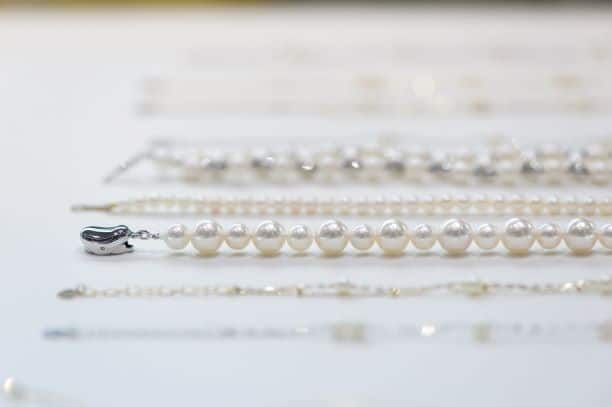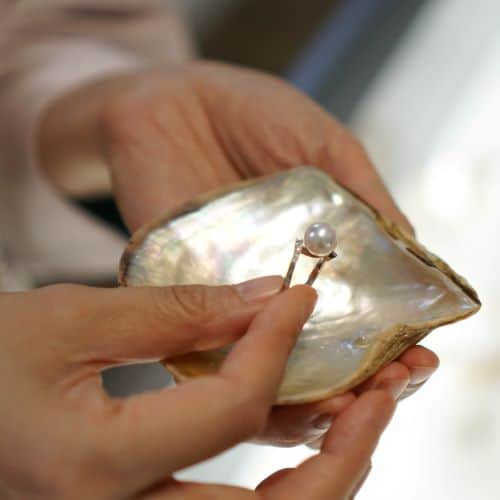
Luster is the single most important factor in determining the value of a pearl. The higher the luster, the greater the value. The beautiful radiance of gemstones like diamonds can only be achieved by vigorous cutting or polishing, whereas the unique luster of pearls is a gift of nature.
Luster is related to the “thickness of the nacre pearl layers.” It derives from the nacre’s thickness and the crystal components forming the nacre.
Pearl nacre is the coating that a pearl oyster produces to cover the pearl’s nucleus. The nacre of a cultured pearl is composed of thousands of layers of thin calcium carbonate. Each thin layer of calcium carbonate is layered like onion peels, with an even thinner protein mortar layer between each layer of nacre. While the nacre layers determine luster, the protein layers contain pigment that determine the ultimate color of the pearl.

The more densely stacked the nacre of a cultured pearl, the more transparent and more brilliant the pearl will be. When light is reflected or passes through the multiple layers of nacre, pink and green colors emerge from the inside. The pearl seems to radiate like a soap bubble.
When nacre layers are varied in thickness or uneven, a pearl and its intrinsic colors will be weakened. The pearl will have a blurrier impression and the pearl’s value will be impacted. When the nacre layers are consistently thick, the pearl has a rich and deep brightness and is highly valued. Nacre thickness and pearl luster are important interrelated factors when gauging a pearl’s quality.
